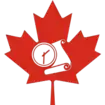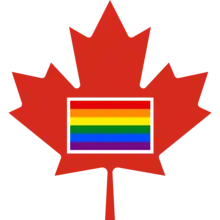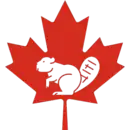| Showcase | Content | Contributing |
Introduction
Canada is a country in North America. Its ten provinces and three territories extend from the Atlantic Ocean to the Pacific Ocean and northward into the Arctic Ocean, making it the world's second-largest country by total area, with the world's longest coastline. Its border with the United States is the world's longest international land border. The country is characterized by a wide range of both meteorologic and geological regions. It is a sparsely inhabited country of 40 million people, the vast majority residing south of the 55th parallel in urban areas. Canada's capital is Ottawa and its three largest metropolitan areas are Toronto, Montreal, and Vancouver.
Canada is a parliamentary democracy and a constitutional monarchy in the Westminster tradition. The country's head of government is the prime minister, who holds office by virtue of their ability to command the confidence of the elected House of Commons and is "called upon" by the governor general, representing the monarch of Canada, the head of state. The country is a Commonwealth realm and is officially bilingual (English and French) in the federal jurisdiction. It is very highly ranked in international measurements of government transparency, quality of life, economic competitiveness, innovation, education and gender equality. It is one of the world's most ethnically diverse and multicultural nations, the product of large-scale immigration. Canada's long and complex relationship with the United States has had a significant impact on its history, economy, and culture. (Full article...)
Featured article -
The Accurate News and Information Act (complete title: An Act to Ensure the Publication of Accurate News and Information) was a statute passed by the Legislative Assembly of Alberta, Canada, in 1937, at the instigation of William Aberhart's Social Credit government. It would have required newspapers to print "clarifications" of stories that a committee of Social Credit legislators deemed inaccurate, and to reveal their sources on demand. (Full article...)
Featured biography -
Angus Lewis Macdonald PC QC (August 10, 1890 – April 13, 1954), popularly known as 'Angus L.', was a Canadian lawyer, law professor and politician from Nova Scotia. He served as the Liberal premier of Nova Scotia from 1933 to 1940, when he became the federal minister of defence for naval services. He oversaw the creation of an effective Canadian navy and Allied convoy service during World War II. After the war, he returned to Nova Scotia to become premier again. In the election of 1945, his Liberals returned to power while their main rivals, the Conservatives, failed to win a single seat. The Liberal rallying cry, "All's Well With Angus L.," was so effective that the Conservatives despaired of ever beating Macdonald. He died in office in 1954. (Full article...)
Selected panorama -
Woody Point, Western Newfoundland. Panorama of the Gros Morne National Park with the Tablelands, overlooking Bonne Bay
Credit: Tango7174
National symbol -

The Trans-Canada Highway (French: Route Transcanadienne; abbreviated as the TCH or T-Can) is a transcontinental federal–provincial highway system that travels through all ten provinces of Canada, from the Pacific Ocean on the west coast to the Atlantic Ocean on the east coast. The main route spans 7,476 km (4,645 mi) across the country, one of the longest routes of its type in the world. The highway system is recognizable by its distinctive white-on-green maple leaf route markers, although there are small variations in the markers in some provinces. (Full article...)
Selected vital article -
The politics of Canada function within a framework of parliamentary democracy and a federal system of parliamentary government with strong democratic traditions. Canada is a constitutional monarchy, in which the monarch is head of state. In practice, the executive powers are directed by the Cabinet, a committee of ministers of the Crown responsible to the elected House of Commons of Canada and chosen and headed by the Prime Minister of Canada. (Full article...)
Selected picture -
Current events
- January 2, 2024 – 2024 Haneda Airport runway collision
- A Japan Airlines Airbus A350-900 aircraft collides with a Japan Coast Guard Dash 8 aircraft and bursts into flames at Haneda Airport in Tokyo, Japan. All 379 occupants aboard the Japan Airlines flight are evacuated, while five of the six occupants aboard the Coast Guard aircraft are killed. (BBC News) (Reuters)
- December 20, 2023 –
- Canada implements a single-use plastic ban as part of its initiative to achieve zero plastic waste by 2030, despite a court ruling that deemed such restrictions unconstitutional. (AFP via Daily Tribune)
- November 26, 2023 –
- Three people are killed and two others are critically injured in a mass shooting at a residence in Winnipeg, Manitoba, Canada. (UPI)
- November 22, 2023 – 2023 Rainbow Bridge explosion
- A car explodes near the Canada–United States border at the Rainbow Bridge in Niagara Falls, New York, United States, killing the two people inside the vehicle and injuring a border agent. The New York state government temporarily closes all border crossings between the United States and Canada in Western New York in response to the explosion. (Reuters)
- November 17, 2023 – Rohingya genocide case
- Canada, Denmark, France, Germany, the Netherlands, and the United Kingdom formally join the genocide case at the International Court of Justice against Myanmar, accusing Myanmar's military junta of committing genocide against the Rohingya people. (Al Jazeera)
- November 6, 2023 –
- Two people are killed and two others are injured when a tanker explodes outside the High Commission of Canada in Abuja, Nigeria. (CBC News)
Did you know -
- ... that Inuvialuk actress Marika Sila views her acting career as a platform for outreach and education on the culture and rights of Indigenous peoples in Canada?
- ... that Canadian cricketer Divya Saxena was accused of obstructing the field in an international match but was ruled "not out"?
- ... that Fred Marples felt it was the duty of all Canadians to ensure the strongest possible national team at the Olympics?
- ... that the Bancroft region is the only place in Canada and one of very few places in the world where uranium has been mined from pegmatite rock?
- ... that a year after becoming the first woman president of the Canadian Political Science Association, Caroline Andrew moderated the first Canadian leaders' debate on women's issues?
- ... that Gil Kim played professional baseball in the Netherlands, China, Australia, Spain, and Venezuela, scouted in Mexico and the Dominican Republic, and coaches in Canada?
- ... that the Falcon Lake Incident is considered "Canada's best-documented UFO case"?
Featured list -
The Supreme Court of Canada is the highest court of Canada. It was established by the Parliament of Canada through the Supreme and Exchequer Court Act of 1875. Since 1949, the Court has been the final court of appeal in the Canadian justice system. Originally composed of six justices (the Chief Justice of Canada and five puisne justices), the Court was expanded to seven justices by the creation of an additional puisne justice position in 1927, and then to nine justices by the creation of two more puisne justice positions in 1949. (Full article...)
Main articles
Associated Wikimedia
The following Wikimedia Foundation sister projects provide more on this subject:
-
 Commons
Commons
Free media repository -
 Wikibooks
Wikibooks
Free textbooks and manuals -
 Wikidata
Wikidata
Free knowledge base -
 Wikinews
Wikinews
Free-content news -
 Wikiquote
Wikiquote
Collection of quotations -
 Wikisource
Wikisource
Free-content library -
 Wikiversity
Wikiversity
Free learning tools -
 Wikivoyage
Wikivoyage
Free travel guide -
 Wiktionary
Wiktionary
Dictionary and thesaurus
.svg.png.webp)







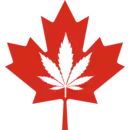

.png.webp)
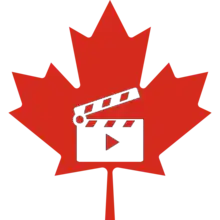
.png.webp)
